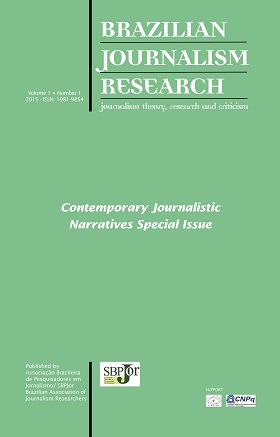Abstract
This article analyzes stories from the magazines Trip, TPM and Rolling Stone in order to reflect about the testimonial dimension of first-person journalistic narratives. Recovering studies on the testimony in History, especially those related to the survivors of World War II, and also in Social Communication, the article ponders that, in general, the first-person narrative does not always constitute journalistic experiences by the same ways. Thus, it is observed the setting of a “testimonial rhetoric” on different forms, i.e., the search for a co-presence effect, essential for the authentication of the reports, the narrator and the presented events.
Copyright for articles published in this journal is retained by the authors, with first publication rights granted to the journal. By virtue of their appearance in this open access journal, articles are free to use, with proper attribution, in educational and other non-commercial settings.
This work is licensed under a Creative Commons Attribution-NonCommercial-NoDerivatives 4.0 International License.


